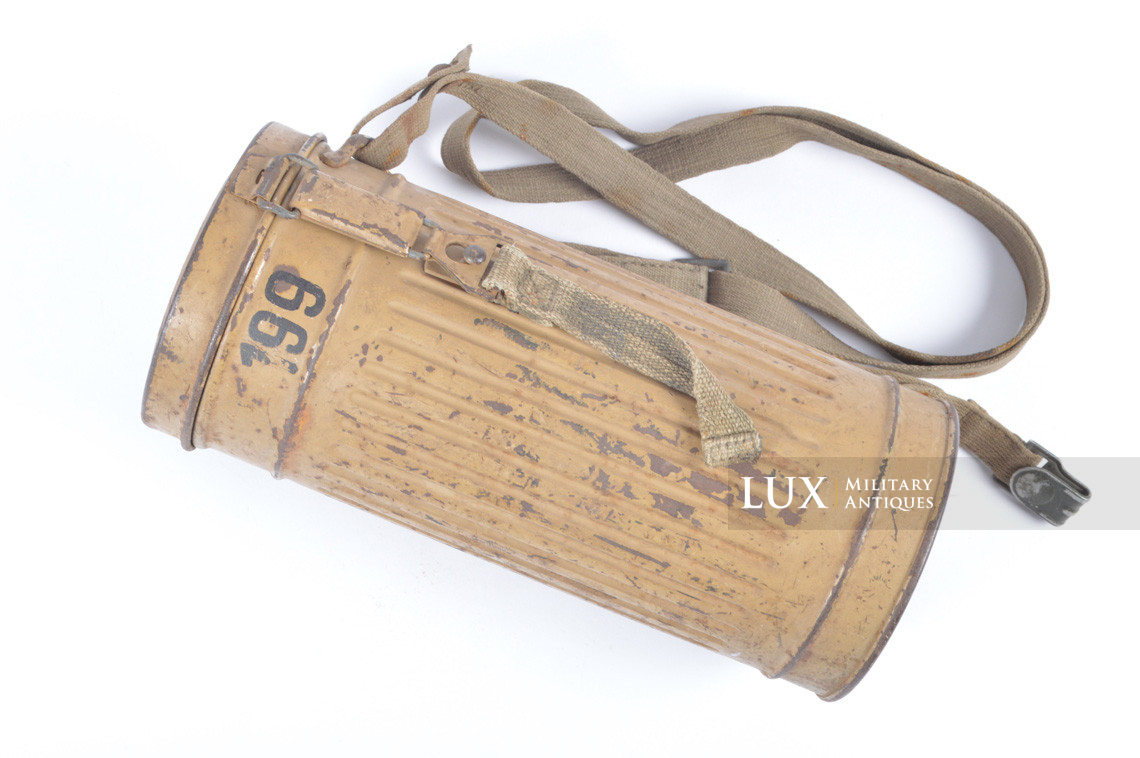

No successful or effective countermeasure was found during the war. This was mustard gas, which caused severe damage simply by making contact with the skin. One form of gas was so deadly that no gas mask was truly effective. Several million SBRs were produced, and many have survived, making them popular with collectors. The LBRs were produced in large numbers and were issued to rear-guard troops and artillery personnel. The system offered an additional benefit: the SBR could be upgraded as more effective filter technology was introduced. The box filter was actually worn around the neck in a canvas carrying bag. However, the LBR’s development led to the SBR, which featured a single-piece, close-fitting rubberized mask with eyepieces. Interestingly, the first version was known as the large box respirator (LBR), but it proved to be too bulky, as it needed a box canister to be carried on the back. The dubious hood was finally superseded by the main British gas mask of World War I, the small box respirator (SBR). The new version also offered improved chemical impregnation, but it was still a dreadful solution, made worse because the impregnating solution sometimes was so thickly applied that it made a sticky mess. It was still basically a bag that was worn over the head, but it featured two mica eyepieces to allow users to see, a 50 percent increase over the hooded mask. It was officially designated the tube helmet since it had an exhalation valve for the user’s mouth. The PH, or smoke hood, was basically a large hood worn over the head, typical of early gas mask technology.įor this gas, the British developed the P helmet, also known as the PHG or PH helmet. It was meant to protect against chlorine directly and thus couldn’t protect against other gases, notably phosgene, which was developed by the Germans over the summer of 1915 and proved far more powerful than chlorine while being relatively difficult to detect. Macpherson’s hood was essentially a khaki-colored flannel bag soaked in a solution of glycerin and sodium thiosulphate-thus. This was unofficially known the Hypo helmet, but was officially dubbed the British smoke hood. Designed by Captain Cluny Macpherson, a medical officer to the Newfoundland Regiment, the hood featured a single-windowed visor to allow the user to see. The next step was to develop a hood worn completely over the head. The basic cloth and cotton pads evolved into strips of chemically soaked fabric called the black veil respirator.
#GERMAN GAS MASK BOX FULL#
However, gas mask protection went into full gear following the German attack at Ypres.īoth the British and French looked to devise new ways of protecting soldiers against the sinister new form of attack. This evolved over the next half century into devices used by miners and for tunneling. Much later, in the 19th century, American mining engineer Lewis Haslett invented a device that filtered dust from the air. But, interestingly, they were not the first true gas masks.Īs far back as ancient times, the Greeks used sponges as masks to protect the wearer from smoke and other hazardous fumes, both on and off the battlefield. Early gas masks were nothing more than cotton wool pads or cloth soaked in water or in some cases urine.

As a result, Allied forces struggled to find effective countermeasures. So devastating was the attack that it almost enabled a rare German breakthrough. This attack caused an immediate panic leading to a massive retreat. When inhaled, the gas destroyed the alveoli of the lungs, causing men to essentially “drown” on the liquid created by their own bodies. The first chlorine gas attack, which hit French Colonial and Canadian troops, appeared as a yellowish-green cloud. Introduced during World War I, the French Army used the ARS 1917 until 1935. And while the gas actually killed very few combatants when compared to the vast numbers who gave their lives in the war (according to some sources, as many as 93 percent of gas casualties returned to duty within a few weeks), it was quite a success as a psychological weapon. But it was that calm April day that marked how truly devious gas could be as a weapon of war. While the first widespread use of poison gas occurred on April 22, 1915, near Ypres, Belgium, there had been previous small experiments by the Germans in the weeks prior to the attack. For soldiers on both sides, the horrific effects of the new weapon added another vital piece of equipment to the soldiers’ needs-the gas mask. In a conflict that already was infamous for reaching new depths in the shameful chronicle of man’s inhumanity to man, the new weapon proved to be so heinous that it was never used again on such a massive scale.

With World War I in a seeming stalemate, German forces in late April 1915 introduced a horrific new weapon to the fighting.


 0 kommentar(er)
0 kommentar(er)
